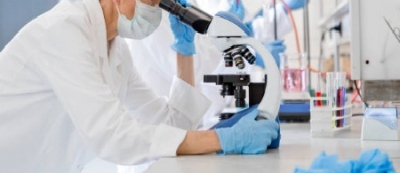Scientists identify new genetic target for male contraception
By IANS | Published: April 18, 2023 04:24 PM2023-04-18T16:24:06+5:302023-04-18T16:40:08+5:30
New York, April 18 Scientists have in a breakthrough identified a gene, which when blocked or deactivated via ...

Scientists identify new genetic target for male contraception
New York, April 18 Scientists have in a breakthrough identified a gene, which when blocked or deactivated via drugs can reduce sperm count.
The findings, detailed in the journal Nature Communications, could pave the way for a highly effective, reversible and non-hormonal male contraceptive for humans and animals.
The team from Washington State University identified expression of the gene, Arrdc5, in the testicular tissue of mice, pigs, cattle and humans.
When they knocked out the gene in mice, it created infertility only in the males, impacting their sperm count, movement and shape.
"The study identifies this gene for the first time as being expressed only in testicular tissue, nowhere else in the body, and it's expressed by multiple mammalian species," said Jon Oatley, senior author and professor in WSU's School of Molecular Biosciences.
"When this gene is inactivated or inhibited in males, they make sperm that cannot fertilise an egg, and that's a prime target for male contraceptive development," Oatley said.
While other molecular targets have been identified for potential male contraceptive development, the Arrdc5 gene is specific to the male testes and found in multiple species.
Importantly, lack of the gene also causes significant infertility creating a condition called oligoasthenoteratospermia or OAT. This condition, the most common diagnosis for human male infertility, shows a decrease in the amount of sperm produced, slowed mobility and distorted shape so that the sperm are unable to fuse with an egg.
In the study, the male mice lacking this gene produced 28 per cent less sperm that moved 2.8 times slower than in normal mice and about 98 per cent of their sperm had abnormal heads and mid-pieces.
The study indicates that the protein encoded by this gene is required for normal sperm production. Oatley's team will next work on designing a drug that would inhibit production or function of that protein.
Disrupting this protein wouldn't require any hormonal interference, a key hurdle in male contraception since testosterone plays other roles beyond sperm production in men including building bone mass and muscle strength as well as red blood cell production. Designing a drug to target this protein would also make it easily reversible as a contraceptive.
"You don't want to wipe out the ability to ever make sperm - just stop the sperm that are being made correctly," he said.
Disclaimer: This post has been auto-published from an agency feed without any modifications to the text and has not been reviewed by an editor
Open in app